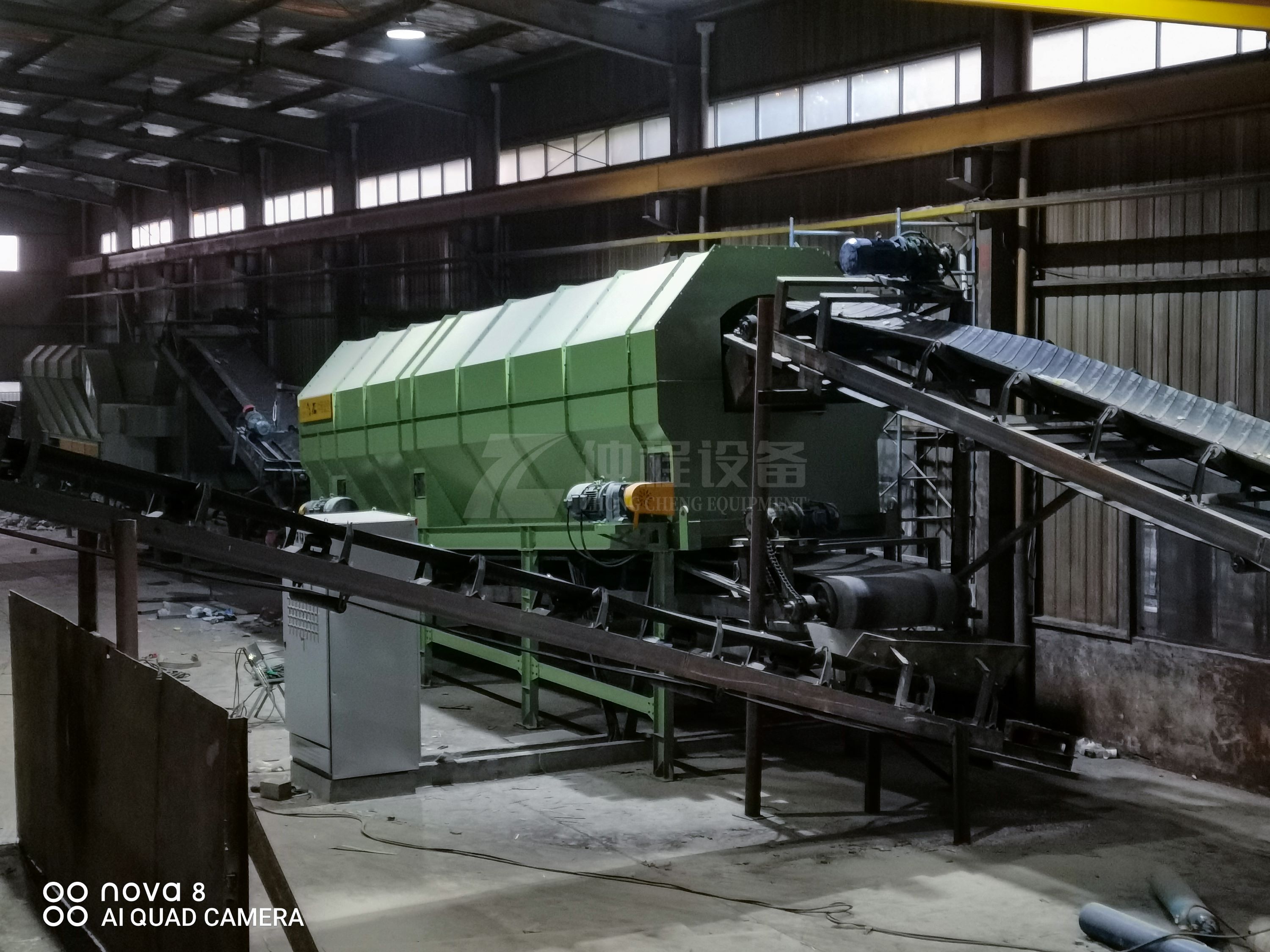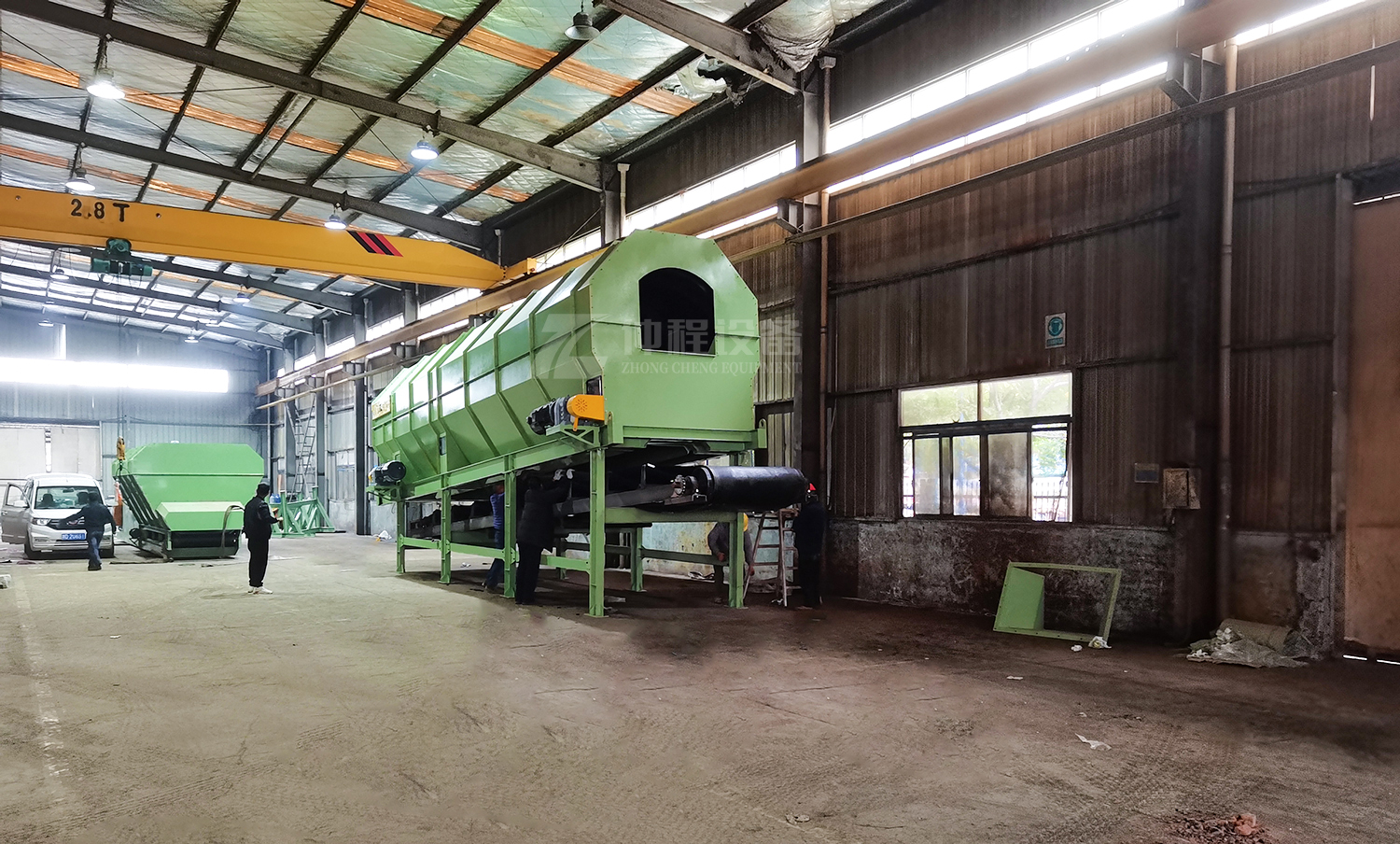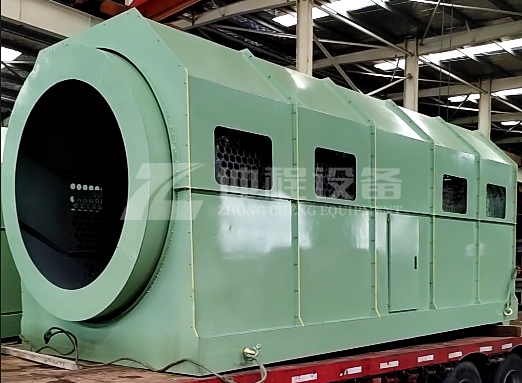Application of trommel screen in waste collection system
In the modern world, effective waste management is an essential aspect of environmental sustainability and urban planning. As populations grow and urban areas expand, the need for efficient and reliable waste collection systems becomes increasingly important. One of the key technologies that have emerged to enhance waste management processes is the roller screen. This article explores the application of roller screens in waste collection systems, highlighting their benefits, functionalities, and potential impact on waste management.
What is a Roller Screen?
A roller screen is a type of mechanical screening equipment used to separate materials based on size. It consists of a series of rotating rollers that are arranged in a specific pattern. As waste materials are fed onto the rollers, they are subjected to a combination of rolling and screening actions. The rollers are typically designed with different spacings and configurations to allow for precise material separation.
Components of Roller Screens
Rotating Rollers: The primary component of a roller screen, these are designed with specific spacings and speeds to separate materials of varying sizes.
Feeding System: Ensures that waste materials are evenly distributed onto the rollers for optimal separation.
Screening Surface: The area where materials are separated based on size as they move across the rollers.
Discharge System: Collects and directs the separated materials into designated containers or conveyors for further processing or disposal.

Applications of Roller Screens in Waste Collection Systems
1. Municipal Solid Waste (MSW) Management
Roller screens are widely used in the management of municipal solid waste. They help in the initial sorting and separation of waste materials, which is crucial for further processing. By efficiently separating organic waste from recyclables and non-recyclables, roller screens contribute to improved recycling rates and reduced landfill usage.
Benefits in MSW Management:
Improved Recycling Efficiency: Roller screens can effectively separate recyclable materials such as plastics, metals, and glass from organic waste, enhancing recycling efforts.
Reduced Landfill Dependency: By separating materials at the source, roller screens minimize the volume of waste sent to landfills, promoting more sustainable waste management practices.
Enhanced Composting Processes: The separation of organic waste facilitates composting, reducing methane emissions and producing valuable soil amendments.
2. Industrial Waste Processing
In industrial settings, roller screens are employed to manage and process various types of waste generated during manufacturing. These screens can handle a wide range of materials, including metals, plastics, and textiles, making them ideal for industries such as automotive, construction, and electronics.
Benefits in Industrial Waste Processing:
Efficient Material Recovery: Roller screens enable the recovery of valuable materials from waste streams, allowing industries to reuse and recycle resources, reducing costs and environmental impact.
Customization for Specific Needs: Industrial applications often require customized roller screen configurations to handle specific waste materials, ensuring optimal performance and efficiency.
Improved Operational Safety: By automating the separation process, roller screens reduce the need for manual handling of potentially hazardous materials, enhancing workplace safety.
3. Construction and Demolition (C&D) Waste Management
Construction and demolition activities generate significant amounts of waste, including concrete, wood, metal, and gypsum. Roller screens are used to separate these materials, facilitating their reuse and recycling.
Benefits in C&D Waste Management:
Resource Recovery: By effectively separating different materials, roller screens promote the recovery and reuse of construction materials, reducing the demand for new resources.
Cost Savings: Recycling construction materials can lead to cost savings in both disposal fees and material procurement, making roller screens a cost-effective solution for C&D waste management.
Environmental Benefits: Reducing the need for new materials and minimizing landfill usage helps decrease the environmental footprint of construction activities.

Advantages of Roller Screens in Waste Collection Systems
1. Efficiency and Precision
Roller screens offer high efficiency and precision in separating materials based on size. This precision is crucial in waste management, where the accurate separation of materials is necessary for effective recycling and disposal processes.
2. Versatility
One of the key advantages of roller screens is their versatility. They can handle a wide range of materials, from fine particles to bulky items, making them suitable for various waste streams. This adaptability allows roller screens to be integrated into different waste collection systems, including those in urban, industrial, and construction settings.
3. Durability and Low Maintenance
Roller screens are designed to withstand harsh operating conditions and are built with durable materials that require minimal maintenance. This reliability ensures continuous operation and minimizes downtime, making them a cost-effective solution for waste management facilities.
4. Scalability
Roller screens can be easily scaled to meet the demands of different waste management operations. Whether it's a small-scale facility or a large industrial plant, roller screens can be customized and configured to handle specific waste volumes and material types.
Challenges and Considerations
While roller screens offer numerous benefits, there are challenges and considerations that need to be addressed in their application:
1. Initial Investment
The installation of roller screens requires a significant initial investment, which can be a barrier for some waste management facilities. However, the long-term benefits and cost savings in operation often justify the upfront costs.
2. Maintenance and Upkeep
Although roller screens are designed for durability, regular maintenance is necessary to ensure optimal performance. Proper training and skilled personnel are required to manage maintenance tasks effectively.
3. Material Compatibility
Not all waste materials may be suitable for roller screening. Facilities need to assess the compatibility of their waste streams with roller screen technology to ensure efficient separation.

Conclusion
Roller screens have emerged as a vital component in modern waste collection systems, offering efficiency, versatility, and environmental benefits. By enhancing the separation and processing of waste materials, roller screens contribute to more sustainable waste management practices. Despite the challenges associated with their implementation, the advantages of roller screens make them a valuable investment for municipalities, industries, and construction sites aiming to improve their waste management processes and reduce their environmental impact. As technology continues to advance, the role of roller screens in waste management is likely to grow, further supporting efforts towards a cleaner and more sustainable future.
-
 Trommel screenTrommel screen, also known as drum screens, are widely used in various industries for sorting and separating materials.Get Quote
Trommel screenTrommel screen, also known as drum screens, are widely used in various industries for sorting and separating materials.Get Quote -
 Crop straw double shaft shreddApplications:Biomass Energy Production: Shredded straw can be used as a feedstock for bioenergy plants to produce electricity or heat.Livestock Feed: Reduced-si...Get Quote
Crop straw double shaft shreddApplications:Biomass Energy Production: Shredded straw can be used as a feedstock for bioenergy plants to produce electricity or heat.Livestock Feed: Reduced-si...Get Quote -
 Zhongcheng Air Drum SeparatorAir drum separators effectively separate lightweight materials (e.g., plastics, paper) from heavier materials (e.g., metals, glass). This high efficiency is cru...Get Quote
Zhongcheng Air Drum SeparatorAir drum separators effectively separate lightweight materials (e.g., plastics, paper) from heavier materials (e.g., metals, glass). This high efficiency is cru...Get Quote
-
2024-07-09Recycling Balers-Safe,Easy-To-Use and affordableThe operating principle of a strapping machine primarily involves the following steps:1.Item Positioning:Firstly, the item to be strapped must be placed accurat...
-
2024-05-29Landfill stale garbage screening projectAfter communicating with our domestic customers in Shandong Province, we learned that he needed to dispose of the garbage in the landfill through excavation, sc...
-
2023-01-12Waste FeederWaste feeder was specially designed to optimize municipal solid waste sorting systems. The Drum Feeder ensures that your sorting system, baler or shredder has a...
-
2024-08-12The Advantages of Horizontal Baling TechnologyA horizontal baler, also known as a horizontal baling machine, is a piece of equipment used for compressing materials and wrapping them into bales. This process...
-
2024-06-06Drum Screen For Composting PlantDrum screen, also known as a rotary drum screen or trommel screen, is an essential piece of equipment used in composting plants for the separation of compost ma...



